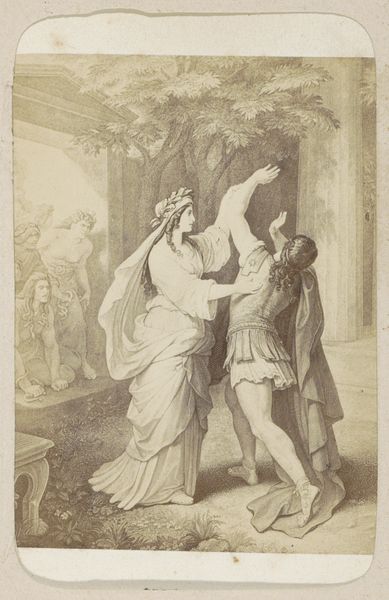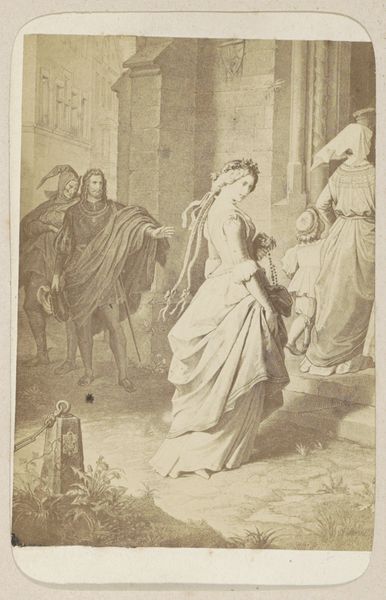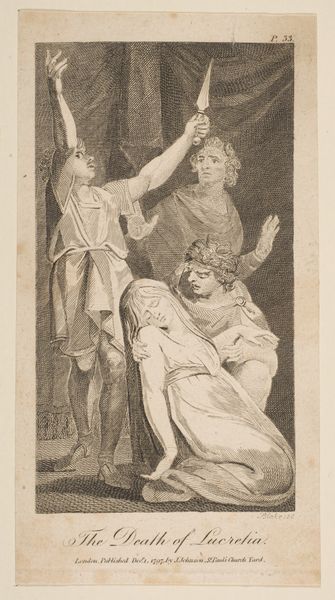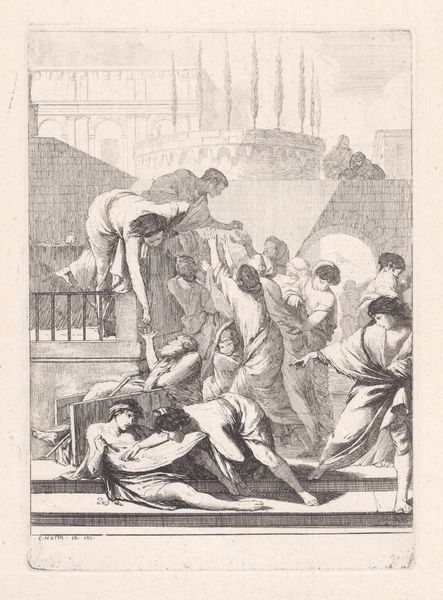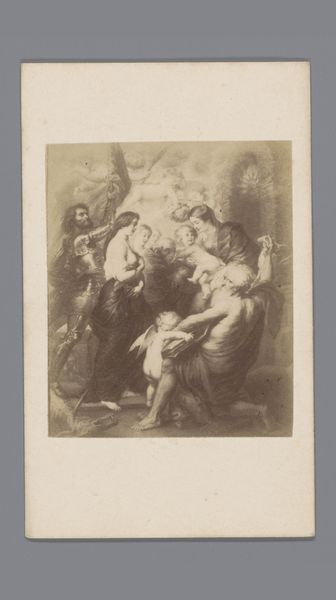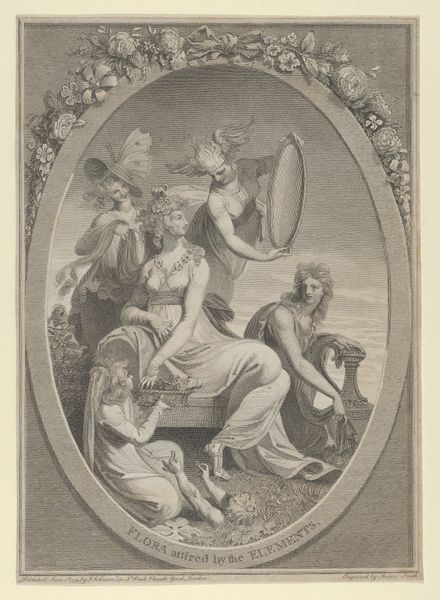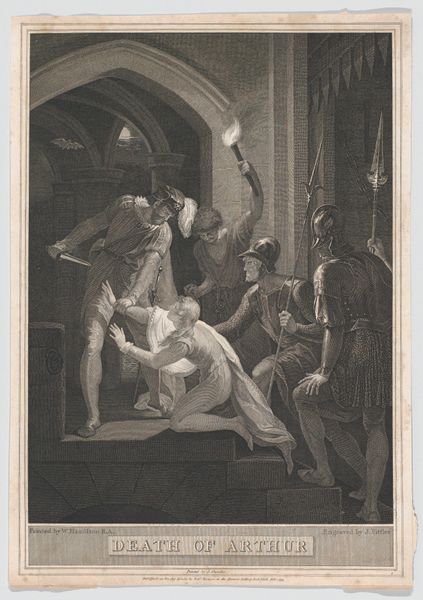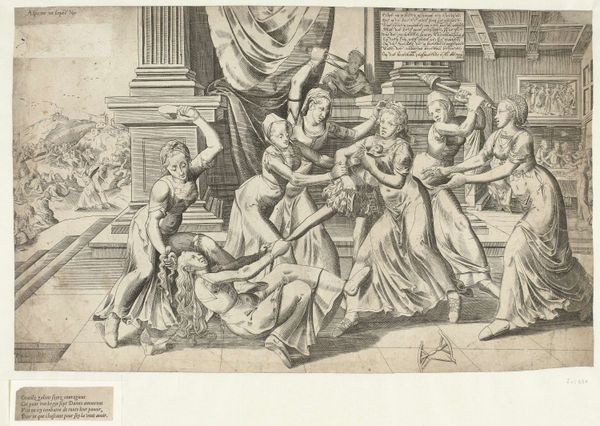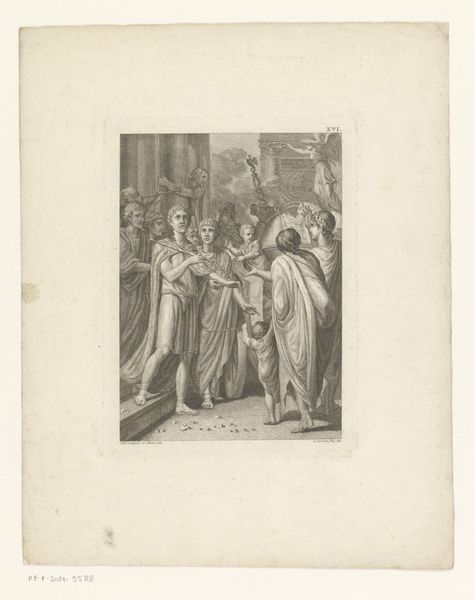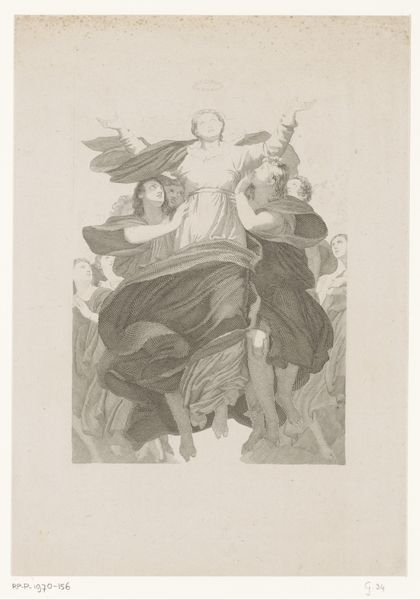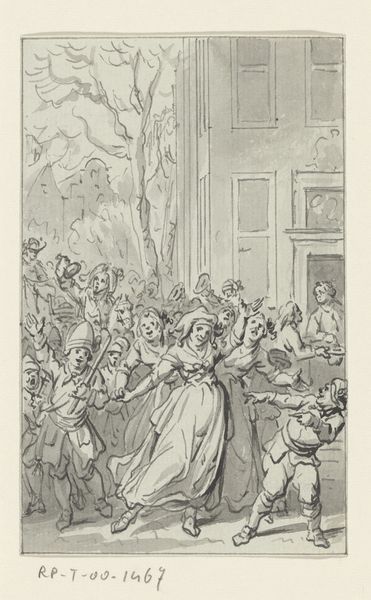
Fotoreproductie van (vermoedelijk) een prent naar werk van W. von Kaulbach: Clärchen (Egmont) c. 1860 - 1890
0:00
0:00
andriesjager
Rijksmuseum
Dimensions: height 77 mm, width 55 mm
Copyright: Rijks Museum: Open Domain
Editor: So, here we have a photo reproduction, likely of a print, dating back to somewhere between 1860 and 1890, based on a work by W. von Kaulbach titled "Clärchen (Egmont)." The material itself is a photograph. It definitely feels staged and intensely dramatic. The figures, their expressions... It almost looks like something catastrophic is about to unfold. What do you make of this scene? Curator: Catastrophic is a great way to describe it. This reproduction transports us back to the 19th century and invites us into the world of Romanticism, where emotional intensity reigns supreme. Can you see the expressions of despair on the faces of the crowd? Look at Clärchen – her body language, her raised arms! It feels like a desperate cry for freedom, perhaps a symbolic resistance to tyranny. But who are these people, and what tyranny are they up against, do you think? Editor: Right, they seem terrified! Perhaps the artwork's title holds a clue: Clärchen is the main character in Goethe's play "Egmont", and the play itself deals with a nation resisting the oppression of a foreign power. The picture then is showing an iconic moment from the play! But how does Kaulbach’s visual representation contribute to our understanding of the play's themes? Curator: A delicious question. Notice the sharp contrasts in light and shadow? It heightens the drama and almost lends a dreamlike quality to the image. Kaulbach doesn't simply illustrate a scene; he seems to be striving for the realm of myth. Through the dynamism of Romanticism, the artist distills feelings of anxiety, passion, and rebellion – these intense human experiences give life to the print and, even in reproduction, echo in the chambers of the modern heart. Editor: That's fascinating. So, it’s not just about depicting a historical scene, but about tapping into something timeless. Curator: Precisely. By the way, Goethe thought the ending to Egmont a total catastrophe! Maybe the artwork has caught the perfect moment to resonate with both perspectives, in reality *and* drama! Editor: So interesting. I came here with such a surface understanding of history paintings, but this connection really brings the period and artwork to life for me.
Comments
No comments
Be the first to comment and join the conversation on the ultimate creative platform.
